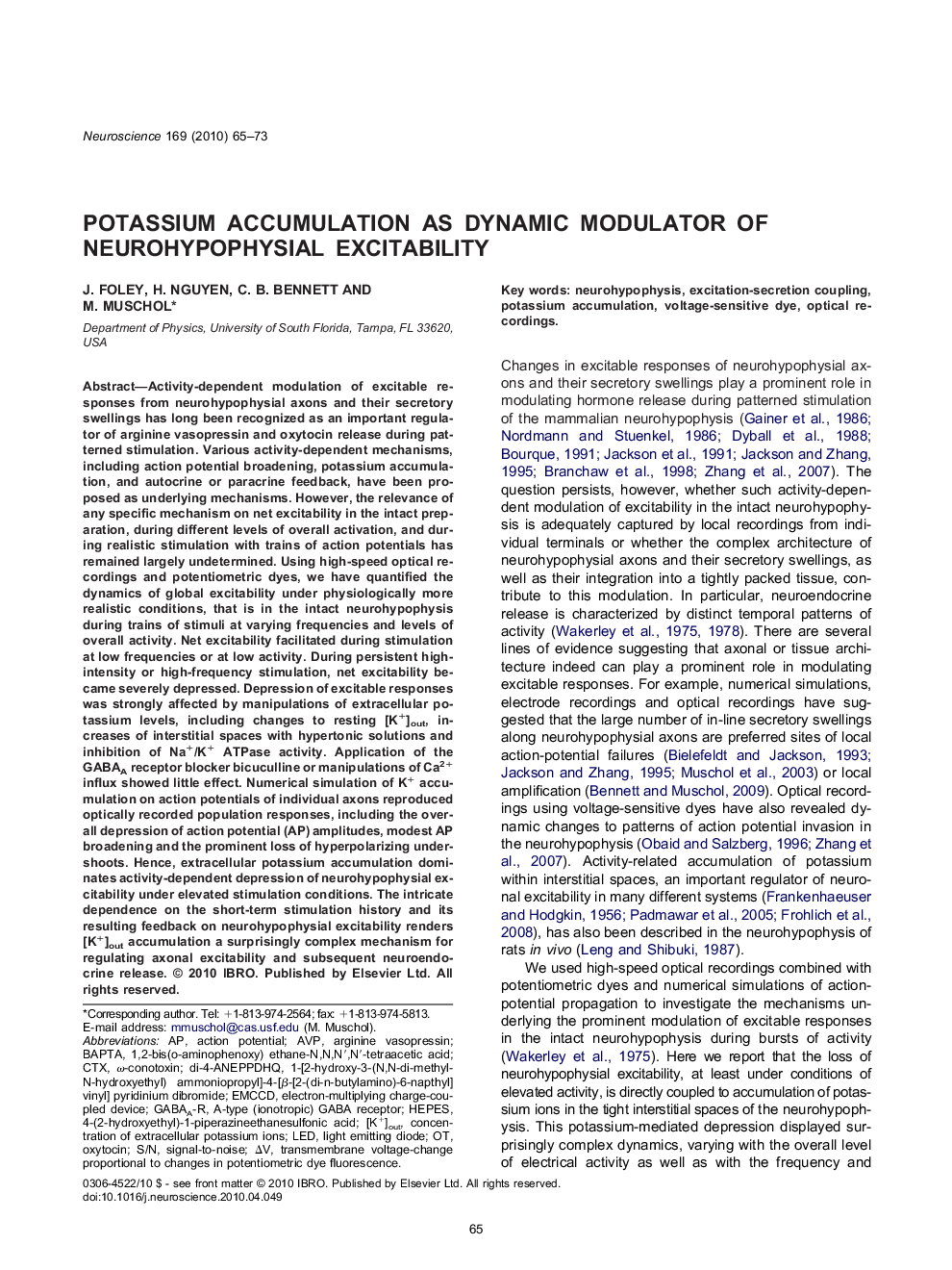| Article ID | Journal | Published Year | Pages | File Type |
|---|---|---|---|---|
| 4339406 | Neuroscience | 2010 | 9 Pages |
Abstract
Activity-dependent modulation of excitable responses from neurohypophysial axons and their secretory swellings has long been recognized as an important regulator of arginine vasopressin and oxytocin release during patterned stimulation. Various activity-dependent mechanisms, including action potential broadening, potassium accumulation, and autocrine or paracrine feedback, have been proposed as underlying mechanisms. However, the relevance of any specific mechanism on net excitability in the intact preparation, during different levels of overall activation, and during realistic stimulation with trains of action potentials has remained largely undetermined. Using high-speed optical recordings and potentiometric dyes, we have quantified the dynamics of global excitability under physiologically more realistic conditions, that is in the intact neurohypophysis during trains of stimuli at varying frequencies and levels of overall activity. Net excitability facilitated during stimulation at low frequencies or at low activity. During persistent high-intensity or high-frequency stimulation, net excitability became severely depressed. Depression of excitable responses was strongly affected by manipulations of extracellular potassium levels, including changes to resting [K+]out, increases of interstitial spaces with hypertonic solutions and inhibition of Na+/K+ ATPase activity. Application of the GABAA receptor blocker bicuculline or manipulations of Ca2+ influx showed little effect. Numerical simulation of K+ accumulation on action potentials of individual axons reproduced optically recorded population responses, including the overall depression of action potential (AP) amplitudes, modest AP broadening and the prominent loss of hyperpolarizing undershoots. Hence, extracellular potassium accumulation dominates activity-dependent depression of neurohypophysial excitability under elevated stimulation conditions. The intricate dependence on the short-term stimulation history and its resulting feedback on neurohypophysial excitability renders [K+]out accumulation a surprisingly complex mechanism for regulating axonal excitability and subsequent neuroendocrine release.
Keywords
Related Topics
Life Sciences
Neuroscience
Neuroscience (General)
Authors
J. Foley, H. Nguyen, C.B. Bennett, M. Muschol,
